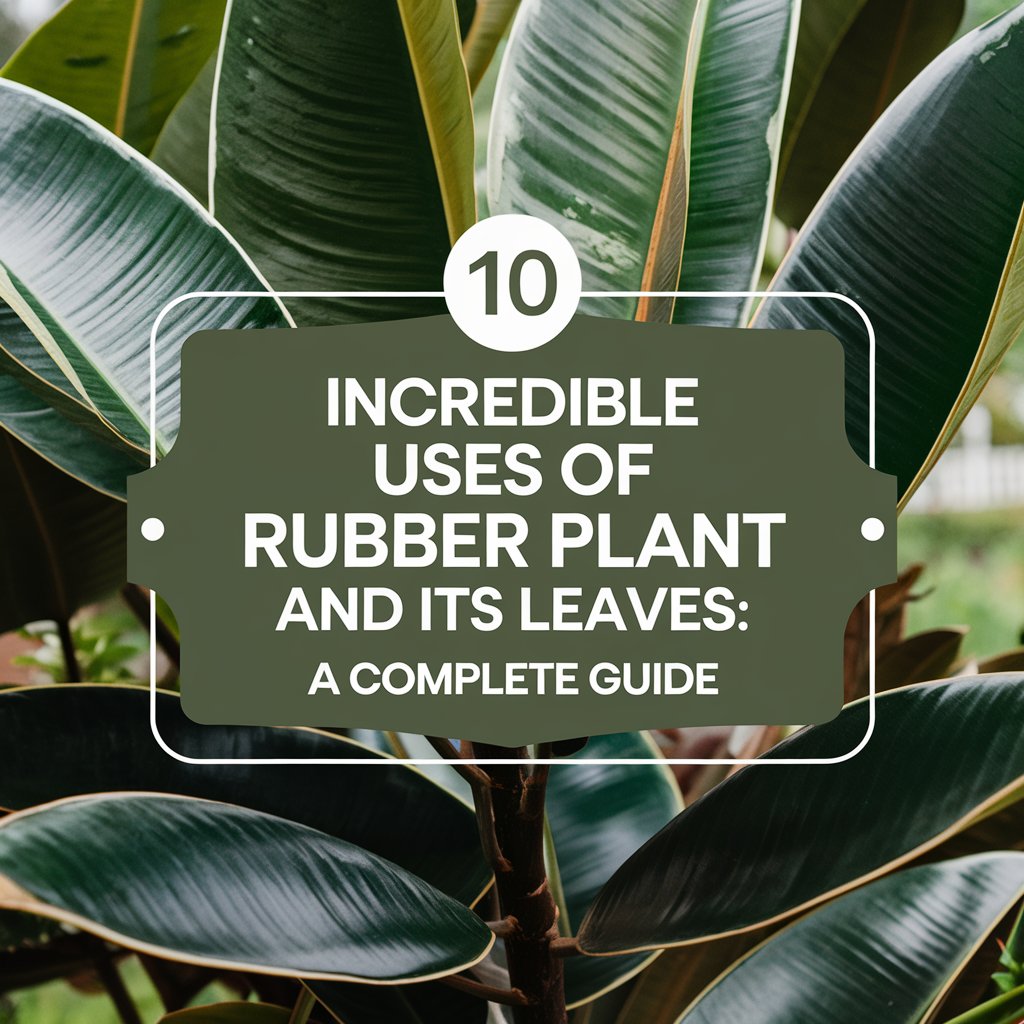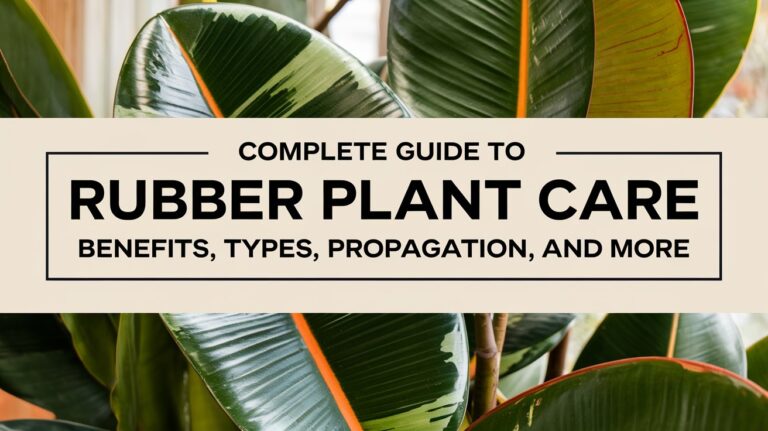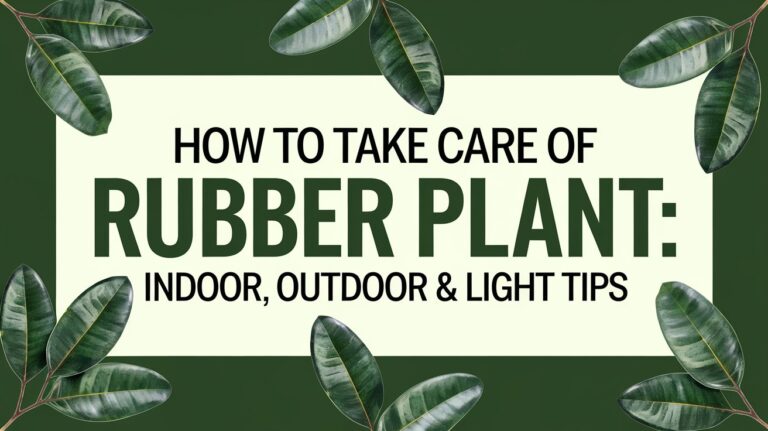Rubber plants (Ficus elastica) are more than just stunning indoor greenery. Beyond their glossy leaves and ability to transform any space, they offer a range of practical, decorative, and even medicinal benefits. I’ve had rubber plants in my home for years, and their versatility constantly amazes me. Whether you’re a seasoned plant parent or just exploring rubber plant uses, this guide will open your eyes to everything this remarkable plant offers.
1. Home Décor Staple
When I first brought a rubber plant home, its elegance immediately elevated the room’s vibe. Rubber plants, with their thick, shiny leaves, are perfect for modern and minimalist interiors. Whether it’s a corner in your living room or an office desk, they add a sense of freshness and sophistication.
2. Natural Air Purifier
One of my favorite things about rubber plants is their ability to clean indoor air. Studies show they remove toxins like formaldehyde, making your home healthier. If you’ve ever felt the air in your home get stale, adding a rubber plant can be a game-changer. Rubber plant uses go beyond aesthetics—they also contribute to better indoor environments.
3. Medicinal Uses of Rubber Plant
I discovered the rubber plant’s medicinal uses through a friend who’s into traditional remedies. While not as widely known, the sap from rubber plants has been used for minor skin irritations and wounds in some cultures. However, be cautious—the sap can be irritating for some people, so always patch-test before use.
4. Stress Reduction and Mental Health
Having greenery in your space works wonders for mental health. The lush foliage of rubber plants creates a calming environment that helps reduce stress. After a hectic day, sitting near my rubber plant with a book or cup of tea feels incredibly grounding. It’s one of those underrated uses of rubber plants that you can’t measure but definitely feel.
5. Rubber Tree Plant Uses in Latex Production
Did you know that the rubber plant’s relative, the para-rubber tree (Hevea brasiliensis), is a major source of natural latex? While the Ficus elastica isn’t used for large-scale rubber production, it was historically tapped for its sap to make waterproof products. This history adds another layer of appreciation for the para-rubber plant uses and products.
6. Soil Erosion Control
In outdoor settings, rubber plants can play a significant role in preventing soil erosion. Their strong roots anchor the soil, making them valuable for landscaping in areas prone to erosion. It’s incredible to think that such a decorative plant can have such an impactful environmental purpose.
7. Rubber Plant Leaf Art
I recently explored rubber plant leaf art, and let me tell you—it’s so much fun! The thick, waxy leaves are perfect for pressing, painting, or using in creative crafts. If you’re into DIY projects, this is one of the most exciting uses of rubber plant leaves. Plus, it’s a unique way to preserve the beauty of your plant.
8. Symbol of Prosperity and Good Luck
Rubber plants are considered auspicious in many cultures. They’re thought to attract prosperity and good fortune, making them popular for Feng Shui and Vastu placements. Adding one to your home or gifting it to someone aligns with the belief in plants as symbols of growth and abundance.
9. Uses of Baby Rubber Plant in Gifting
When it comes to thoughtful gifting, a baby rubber plant is one of my go-to options. It’s compact, easy to care for, and carries an eco-friendly sentiment. Unlike cut flowers, it lasts for years, serving as a living reminder of your thoughtful gesture.
10. Eco-Friendly Solution for Interior Landscaping
Rubber plants are sustainable choices for indoor landscaping. Their durability means they last longer than many other houseplants, reducing the need for frequent replacements. This makes them a cost-effective and environmentally friendly option for greening up spaces.
Caring for Your Rubber Plant Leaves
To fully enjoy the use of rubber plant leaves, it’s essential to keep them healthy. To care for rubber plants, dust them regularly to maintain their glossy appearance, and wipe them down with a damp cloth to remove grime. This small act goes a long way in enhancing rubber plants aesthetic and functional benefits.
Why Rubber Plants Deserve a Place in Your Home
Rubber plants are more than just pretty houseplants—they’re versatile, beneficial, and sustainable. Whether you’re drawn to their rubber plant medicinal uses, love the idea of rubber plant leaf art, or want to improve your home’s air quality, there’s a use for everyone.
I’d love to hear how you use your rubber plant! Share your experiences in the comments below. Let’s celebrate this incredible plant together.
Hi, I’m Pritesh, the heart and hands behind Roots & Earth. My love for plants started when I was just 5 years old, planting trees alongside my grandfather. Those early experiences in the garden left a lasting impression, shaping my deep connection to nature and sparking a lifelong passion for nurturing green spaces.
With an MBA under my belt, I’ve blended my business acumen with my love for gardening, creating Roots & Earth as a way to share my knowledge and inspire others. When I’m not working in my own home garden, you’ll find me traveling to the mountains—my favorite getaway for reconnecting with the natural world.
At Roots & Earth, I’m here to guide you on your gardening journey, whether you’re a seasoned green thumb or just starting out. Together, let’s cultivate beautiful, thriving spaces that enrich our lives and the earth.




